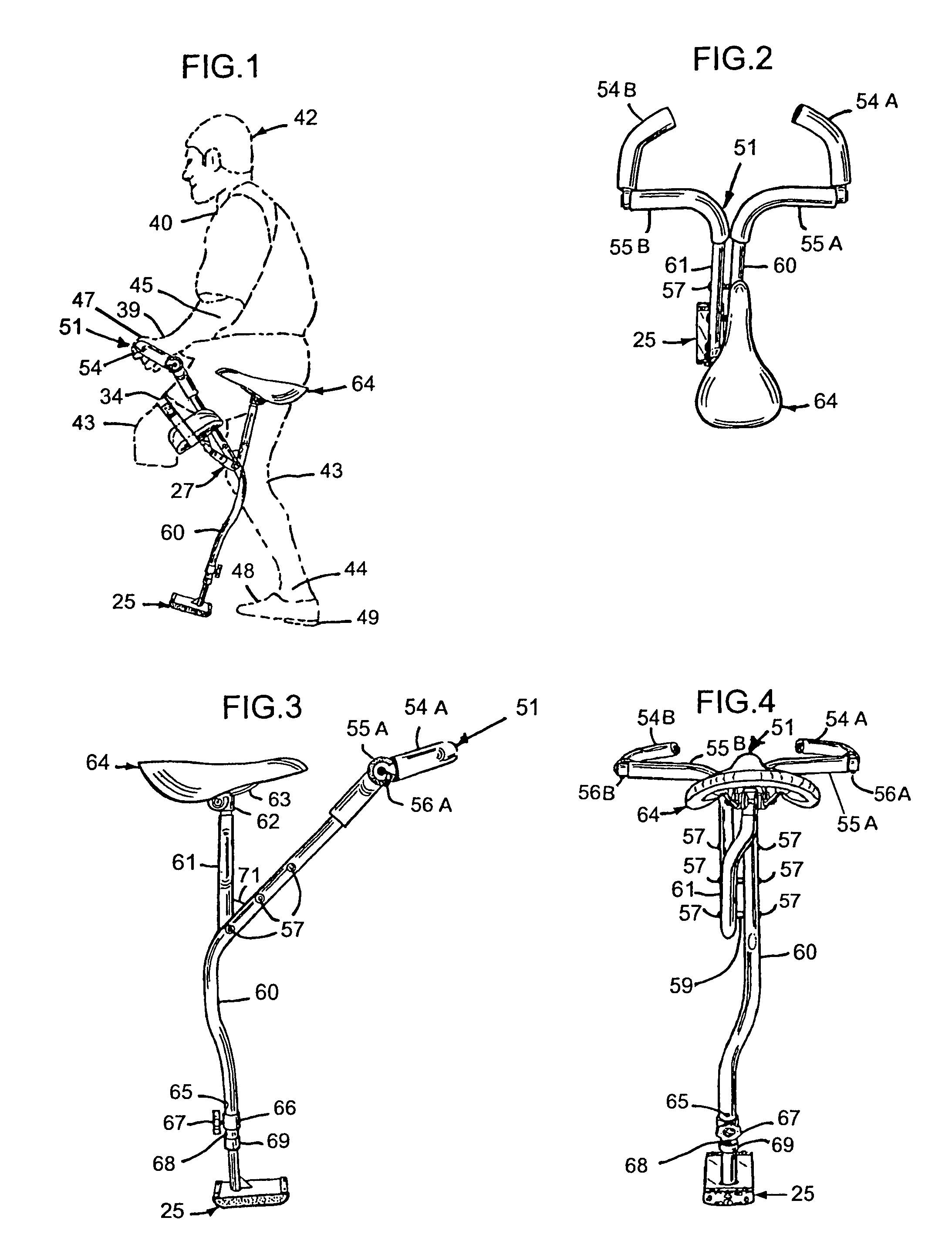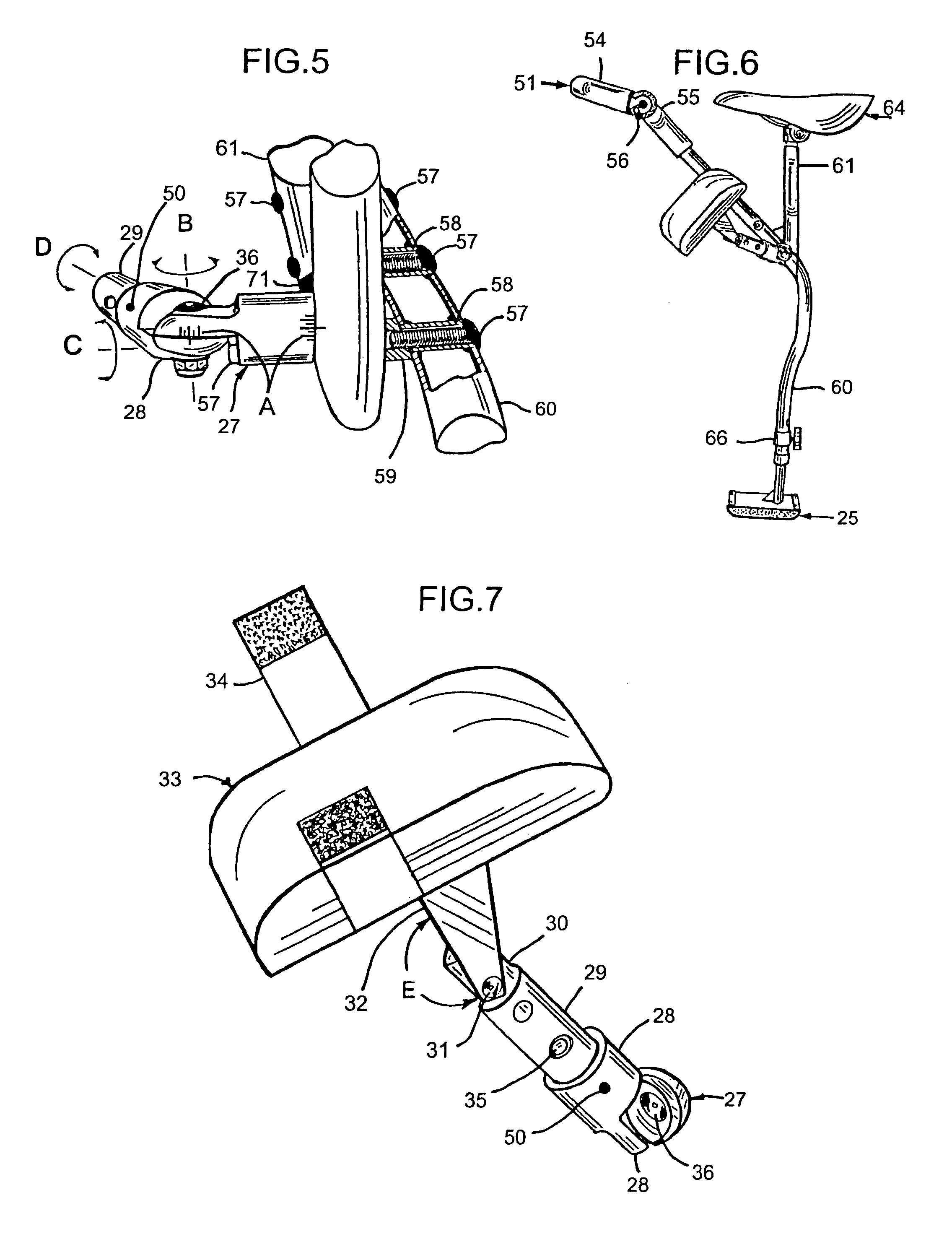Ergonomically designed walker
a walker and ergonomic technology, applied in the field of seated crutches, can solve the problems of not taking into account the need for natural positioning and balance of people, and achieve the effects of reducing the wear of the adjustment button, strong stability, and proper lateral balan
- Summary
- Abstract
- Description
- Claims
- Application Information
AI Technical Summary
Benefits of technology
Problems solved by technology
Method used
Image
Examples
Embodiment Construction
[0026]Referring to the drawings in greater detail, FIG. 1 shows an improved ergonomically designed walker frame 51 made according to the invention and supporting a phantom person 42, with his left leg missing below the knee 43, with the frame 51 coming to rest on a stabilization foot 25. The individual is in a natural comfortable stance with his hands 47, gripping padded handgrip bars 54, similar to that of U.S. Pat. No. 4,641,882. This improved walker frame facilitates the ability to control the balance of the individual in relationship to the stabilization foot 25. It should also be noted that the elbows 45 are at a comfortable distance apart, with the shoulders 40 facing the direction of movement with a slight forward lean as the person 42 rests upon the seat assembly 64.
[0027]Referring now to FIG. 2, the walker 51 is shown in a top view, with an Ed to indicate the relationship between the foot stabilization assembly 25 and the seat assembly 64. The walker frame 51 is comprised p...
PUM
 Login to View More
Login to View More Abstract
Description
Claims
Application Information
 Login to View More
Login to View More - R&D
- Intellectual Property
- Life Sciences
- Materials
- Tech Scout
- Unparalleled Data Quality
- Higher Quality Content
- 60% Fewer Hallucinations
Browse by: Latest US Patents, China's latest patents, Technical Efficacy Thesaurus, Application Domain, Technology Topic, Popular Technical Reports.
© 2025 PatSnap. All rights reserved.Legal|Privacy policy|Modern Slavery Act Transparency Statement|Sitemap|About US| Contact US: help@patsnap.com



